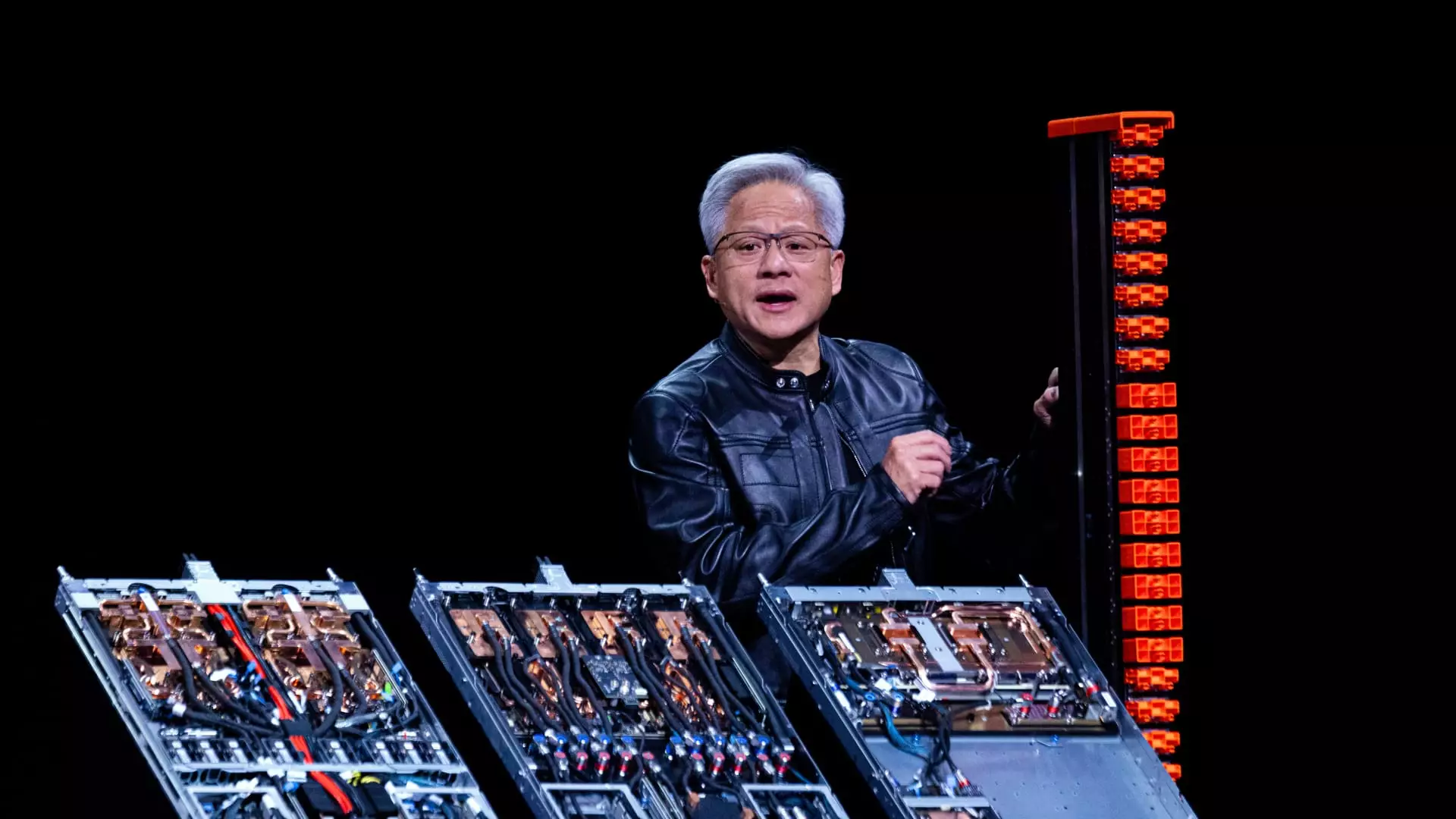Nvidia’s CEO Jensen Huang recently took center stage at Computex 2025, unveiling formidable new initiatives aimed at solidifying Nvidia’s dominance in artificial intelligence computing. At the heart of his keynote was the groundbreaking “NVLink Fusion” program. This ambitious approach seeks to break the walls erected around conventional compatibility and, instead, pave the way for seamless collaboration between Nvidia’s technology and third-party CPUs and GPUs. Until now, NVLink was somewhat of a closed garden, accessible only to Nvidia-denominated silicon. Huang’s announcement is not just a technical development; it signals a transformative shift in the landscape of AI capabilities.
By allowing customers to incorporate non-Nvidia components into their AI infrastructures, NVLink Fusion challenges the very essence of the tightly-knit tech alliances that have defined the industry so far. “You can build semi-custom AI infrastructure, not just semi-custom chips,” Huang insisted, suggesting a broader, more modular future for AI systems. The implications of this flexibility could be profound, offering a glimmer of hope of dismantling the barriers created by competing tech giants who are increasingly caught in an all-or-nothing stance regarding hardware compatibility.
Navigating Competition in AI Data Centers
Huang’s revelations did not stop at simply announcing NVLink Fusion. He also highlighted a host of new partnerships and collaborations with several prominent names—MediaTek, Marvell, and Qualcomm among them—all poised to leverage the NVLink architecture. This could allow Nvidia to encroach deeper into markets where application-specific integrated circuits (ASICs) have typically been viewed as rivals rather than partners. The implications of this strategic pivot are significant; not only does it position Nvidia as a linchpin for various AI infrastructures, but it also raises a myriad of questions about the future of standalone alternatives in hardware.
The excitement surrounding NVLink Fusion should not overshadow the threats it might pose. Balancing a collaborative ecosystem with the reality of competing technologies could potentially dilute Nvidia’s own appeal if users are given too much freedom to choose alternatives over its own CPUs. This clash between fostering innovation while safeguarding proprietary advantage is a fine line that Huang seems intent on walking.
As industry analyst Ray Wang noted, if widely adopted, NVLink Fusion could indeed bolster Nvidia’s reputation as the hub of AI production. However, Wang’s remarks lead to a sobering consideration: the traditional competitors, particularly those like Google, Microsoft, and Amazon who are now developing their own custom chips, loom as disruptive forces on the horizon.
The Crux of AI’s Future: Collaboration or Competition?
The undercurrents of tension are certainly palpable in the AI space, where companies once thought to be allies are now entangled in a competitive dance. In a world where the future lies in sophisticated algorithms and copious amounts of data, the battle over whom remains in the driver’s seat is intensifying. By positioning NVLink Fusion as a bridge across disparate technologies, Nvidia seems intent on steering the future of AI development toward a model built on cooperation rather than consumption.
However, it is crucial to question whether this newfound collaborative vision will yield long-term benefits for Nvidia or become a double-edged sword. Rolf Bulk, an analyst at New Street Research, articulated this concern, suggesting that the flexibility inherent in NVLink Fusion could detrimentally reuse demand for Nvidia’s proprietary CPUs. This situation not only raises eyebrows but also incites a discourse on the sustainability of a hardware model that thrives on integration rather than exclusivity.
Charting Uncharted Waters with NVIDIA DGX Cloud Lepton
In addition to NVLink Fusion, Huang also disclosed Nvidia’s ambitious plans to launch the DGX Cloud Lepton, described as an AI platform equipped with an extensive compute marketplace. This initiative aims to connect developers globally to a vast repository of GPUs provided through cloud networks, thereby addressing a critical bottleneck in accessing high-performance AI resources. With the world of artificial intelligence growing increasingly competitive, such a resource aggregation strategy has the potential to reshape the dynamics of AI development.
What is crucial to note is that these announcements shape Nvidia as not only a technology provider but also as a facilitator within the broader AI ecosystem, positioning the company as a vital cog in a machine fueled by endless innovation. It reflects a shift away from the paradigm where firms operate in silos, perpetuating a culture of collaboration that, if executed thoughtfully, could spell a new dawn for AI technology.
Nvidia’s bold strategies set the stage for complex interactions within the tech ecosystem. While there are valid concerns regarding Nvidia’s position, these recent moves could redefine AI collaboration—making it a dynamic sphere rather than a battleground.


Leave a Reply